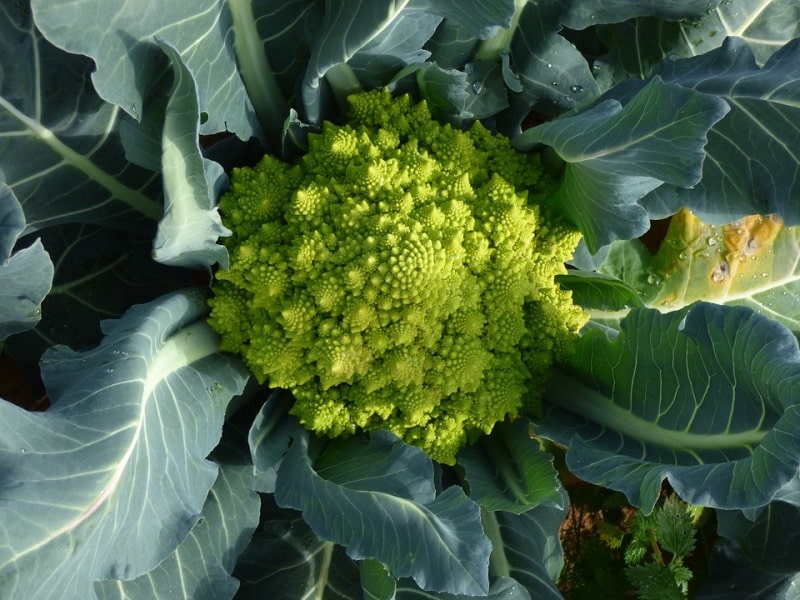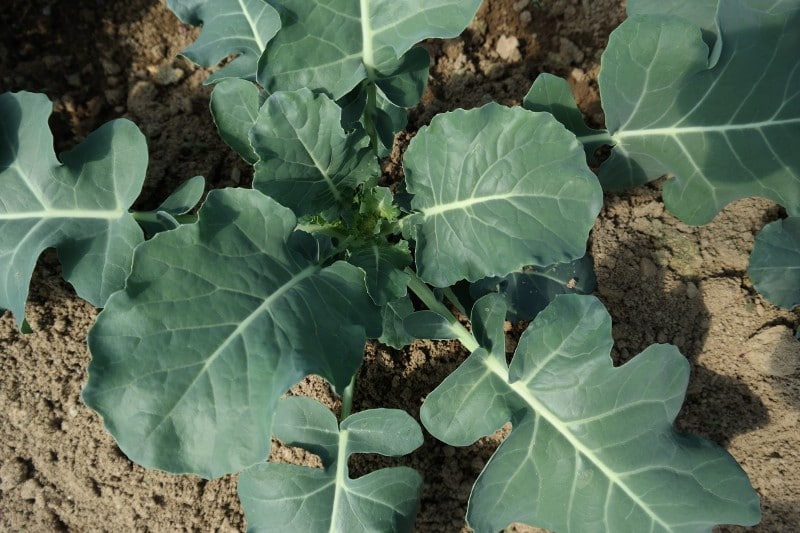Broccoli Gardening Techniques and Ideas
Today, we discuss the topic of Broccoli gardening techniques and tips. Broccoli is one of the members of the brassica family. This is tasty and also consists of plenty of vitamins which are healthy. Broccoli is a vegetable which is the one which can be grown very easily among the brassica family. This vegetable will also not require much maintenance all across the growing period. This vegetable is unique and it can be harvested two times per year based on the time of plantation. Select an area within your garden which has full sun and the soil which is rich and start the plantation of broccoli right now!. Now let us get into the detailed guide of Broccoli gardening techniques.
Selecting varieties of Broccoli to grow:
- If you have a lot of space to grow, then you can go for a variety of broccoli which is large-headed. These are the ones which will produce large crowns. These are the broccoli varieties which are found widely. These will take 2 months for maturity if they are planted at the time of spring and about 3 months for maturity if they are planted at the time of autumn. The varieties of large-headed broccoli are Belstar, Arcadia, Nuti-bud, Munchkin, Pac-man.
- If you are planning to plant in mild winter weather, you can go for a sprouting variety of broccoli. These are the ones which appear bushy and also have a small crown. They will grow best in between the times of spring and autumn. These are the varieties which will take 2 to 2 ½ months for maturity if they are planted at the time of spring and almost 3 months of they are planted at the time of autumn. Few varieties of sprouting broccoli are De Cicco, Purple Peacock, Calabrese, and Purple Sprouting.
- If you are confident that the soil in your garden is of really good quality, then you can go with the Romanesco variety of broccoli. These are the ones which grow in the crowns which are in the shape of a cone and also swirled and look ornamental in your garden and are also crunchy when consumed. These are the varieties which take almost 3 months for maturity if they are planted at the time of spring and almost 3 months to mature if they are planted at the time of autumn. These varieties of broccoli include Romanesco Italia, Veronica, and Natalino.

A typical broccoli variety.
Read: How to Grow Watercress in Your Home Garden.
Preparation of soil for the plantation of Broccoli seeds:
- Broccoli is the one which requires a soil which has pH in between 6 and 7. For this, you can test the soil and make amendments to it by adding several nutrients for the adjustments of its acidity.
- Always make sure that you are testing the soil on a regular basis all across the growing period.
- Moreover, the results of the soil test will update you with what nutrients the soil in your garden is lacking and what you can do to adjust that.
- If you find that the pH level of the soil is less than 6, then you can add planting mix or the compost of acid.
- If you find that the pH level of the soil is more than 7, then you can add granular sulfur.
- If the soil test has informed you that the soil in your garden is of low quality or if you have come to know that the draining capability of the soil is poor, there are many things to can perform to prepare your garden for the plantation of broccoli.
- If you see that your soil is susceptible to floods, then you can take into consideration to build a garden planter box for raising your soil above the ground level. If available, you can also make use of the cedar wood for building your planter box as it is the one which will not rot even if you expose it to water.
- In order to raise the soil fertility, you can combine up to 4 inches of the compost which is mature into the soil. If you see that the soil is in a poor condition, you can go with the addition of organic fertilizer which is rich in nitrogen for enriching the soil.
- Few good choices for the organic fertilizers to be used are cottonseed meal, manure, and alfalfa.
- These broccoli gardening techniques and ideas are very important for home gardeners.
Sowing the seeds and plantation of Broccoli:

Read: Techniques of Indoor Gardening.
- Though broccoli is the one which prefers to be in full sun, it can also tolerate partial shade.
- If you wish to harvest the broccoli in summer, you can start sowing the seeds for about 15 to 20 days before the last spring frost. If you want to harvest broccoli at the time of autumn, then you can directly sow the seeds in the outdoor locations prior to 3 months before the autumn.
- As an alternative, you can start the broccoli seeds in the indoor locations too. If you have chosen to start the seeds in the indoor locations, start planting them in the peat pots or any other seedling pots which are small. You will need to place them in a room which receives sun.
- If you are sowing the seeds in indoor locations, you can even plant them at a more earlier stage and then go for transplanting them to the garden for at least 15 to 20 days before the end of autumn. If you are planting them in separate pots or tray containers, you will not be required to thin them in later stages.
- Your plot in the garden has to be organized into rows which are at a distance of 35 inches from each other. Holes have to be dug for every 24 inches across each row. Keep a few seeds in each and every hole and cover the hole with soil.
- As an option, you can also sow the seeds for every 6 inches and thin the smaller plants or the plants which are not healthy in the process of their growth.
- Make use of a rake to smoothen the soil lightly over the seeds if you are planting them in your garden but make sure that you are not disturbing the seeds.
- The soil has to be patted over the seeds by making use of your fingers if you are planting them in peat pots.
- Now the soil has to be drenched, but make sure that you are not leaving the puddles of water. Broccoli will enjoy well-drained soil. If you have planted the seeds in the indoor locations, you can make use of a spray bottle for dampening the soil.
- If you are directly sowing the seeds of broccoli in the outdoor locations, make sure that you are applying an organic mulch which is prepared with the mature compost, bark or leaves for keeping the soil cool. As an alternative, if you are planting them in the temperatures which are cool, make sure that you are applying a black plastic covering so that the sol can be heated.
- You can also purchase a plastic covering at your local garden center, but any black plastic which is somewhat sturdy like a tarp will also work fine.
- When the seedlings which are planted outdoors will reach a height of 1 inch, then you might require to thin the plants so that in this way, you can let them have some space to grow. Cut off the unhealthy and small plants till the other ones are at a distance of at least 10 inches. This is done for the prevention of overcrowding as the broccoli plants will continue growing.
Transplantation of indoor seedlings of Broccoli:
- When you have sown the seeds in the indoors, transplant the seedlings when they have reached a height of 4 to 6 inches. The height of the plant and its development are very much essential compared to the process of germination.
- Ensure that you are done with the preparation methods of the soil which are mentioned above before you are ready for the transplantation of the seedlings including the fertilization of the soil.
- Your broccoli plants have to be positioned at a similar depth as they were in the containers or pots. The plantation of Miniature varieties can be done as close as almost 1 foot apart.
- The temperature of the soil has to be regulated. For the summer plants, you will need to go with the application of organic mulch of leaves, bark or compost so that the soil can be kept cool whereas, for the winter plants, you will need to go with the application of black plastic covering so that the soil can be kept heat.
- The soil has to be dampened with a perfect watering after the transplantation is completed.
Care and maintenance of your broccoli plants:

Read: Growing Organic Celery in Containers.
- The broccoli plants have to be watered on a regular basis. Let the plants have between 1 and 1 ½ inches of water every week. Broccoli will love to be in the soil which is moist.
- You can also make use of a rain gauge to check the amount of water the plants are taking in a natural way and then take a decision on watering them.
- Ensure that you are not getting wet the broccoli crowns which are budding when you are watering. If you do so, it will cause them to mold.
- In hot or dry weather conditions, specifically, rise the water quantity you are giving to your broccoli plants.
- Your broccoli plants have to be fertilized after 20 days of the plantation. You can make use of an organic mulch fertilizer when you see that the plants are beginning to form fresh new leaves. Fish emulsion is the one which does well for the fertilization of broccoli plants. You can also continue fertilizing the broccoli plants for about 1 time a week till they become ready for harvesting.
- Always make sure that you are avoiding to dig the soil or turn the soil. The Broccoli plants will have roots which are shallow. If you are disturbing the soil, you may break the roots by mistake which will, in turn, damage your broccoli plants.
- If you see that there is a development of weeds all around the plants, you will have to suffocate the weeds by applying the mulch rather than pulling them from the ground so that the roots will not be disturbed.
- If you have chosen to not grow the broccoli plants in an organic way, you can also make use of a chemical pesticide to take off the weeds which are not necessary from your garden without disturbing any of the roots of broccoli.
These broccoli gardening techniques and tips should be followed for successful gardening.
Harvesting Broccoli:
- You will need to harvest the crowns of broccoli when you see that the buds are closed tightly and they have turned into a dark green color. Make sure that you are not waiting till the buds start flowering into yellow or light green flowers. Remove the crown where you see that it meets the stem by making use of garden shears.
- Also, avoid to break the crown off. A perfect cut will help in the encouragement of new growth.
- With a cut which is healthy, the broccoli plant will develop short shoots from the stem’s side. You can continue harvesting the small shoots and the plant will be producing more and more!.
That’s all folks about Broccoli Gardening Techniques and Tips. Happy gardening!.
Read: Types of Farming Tools.